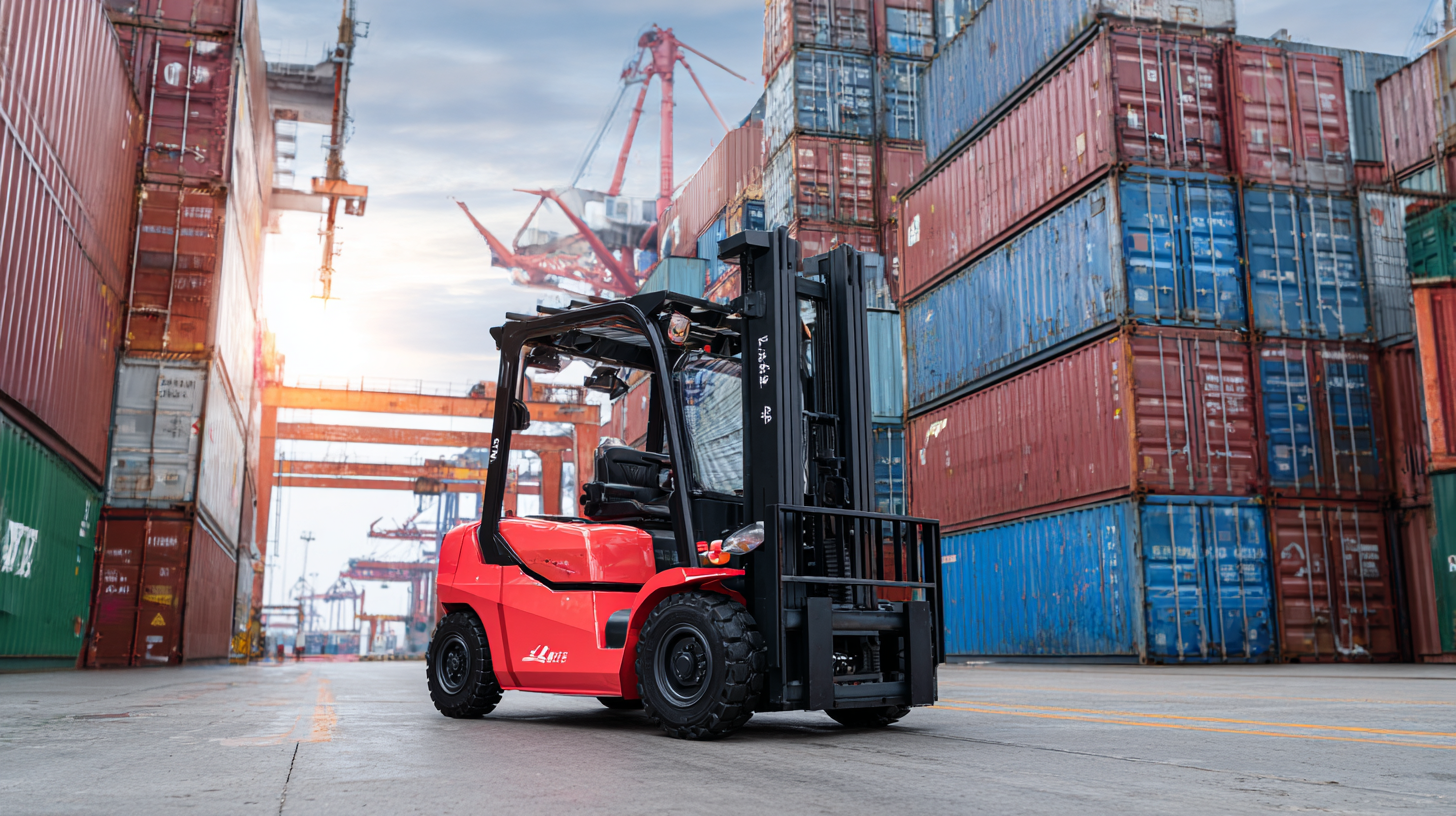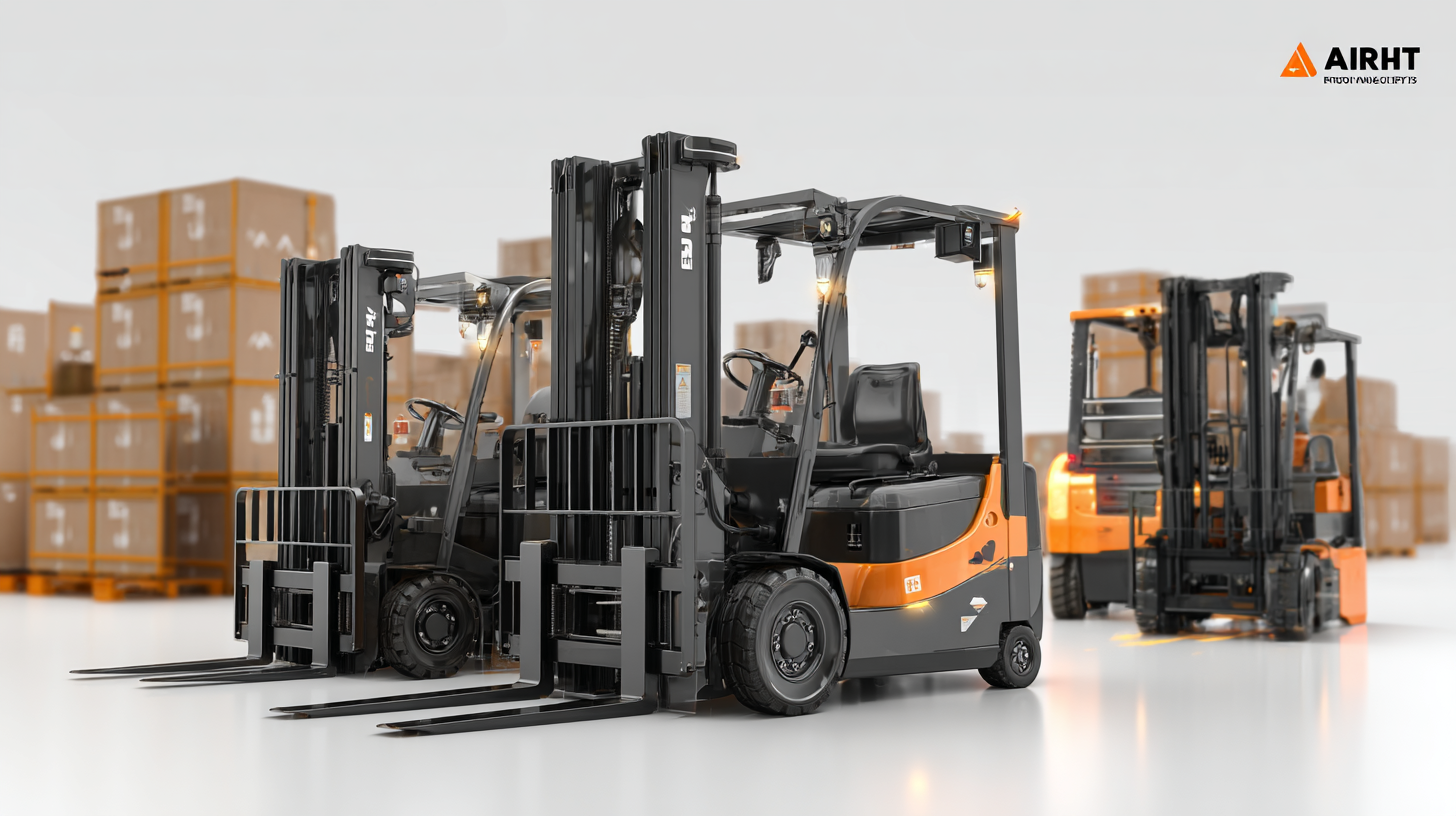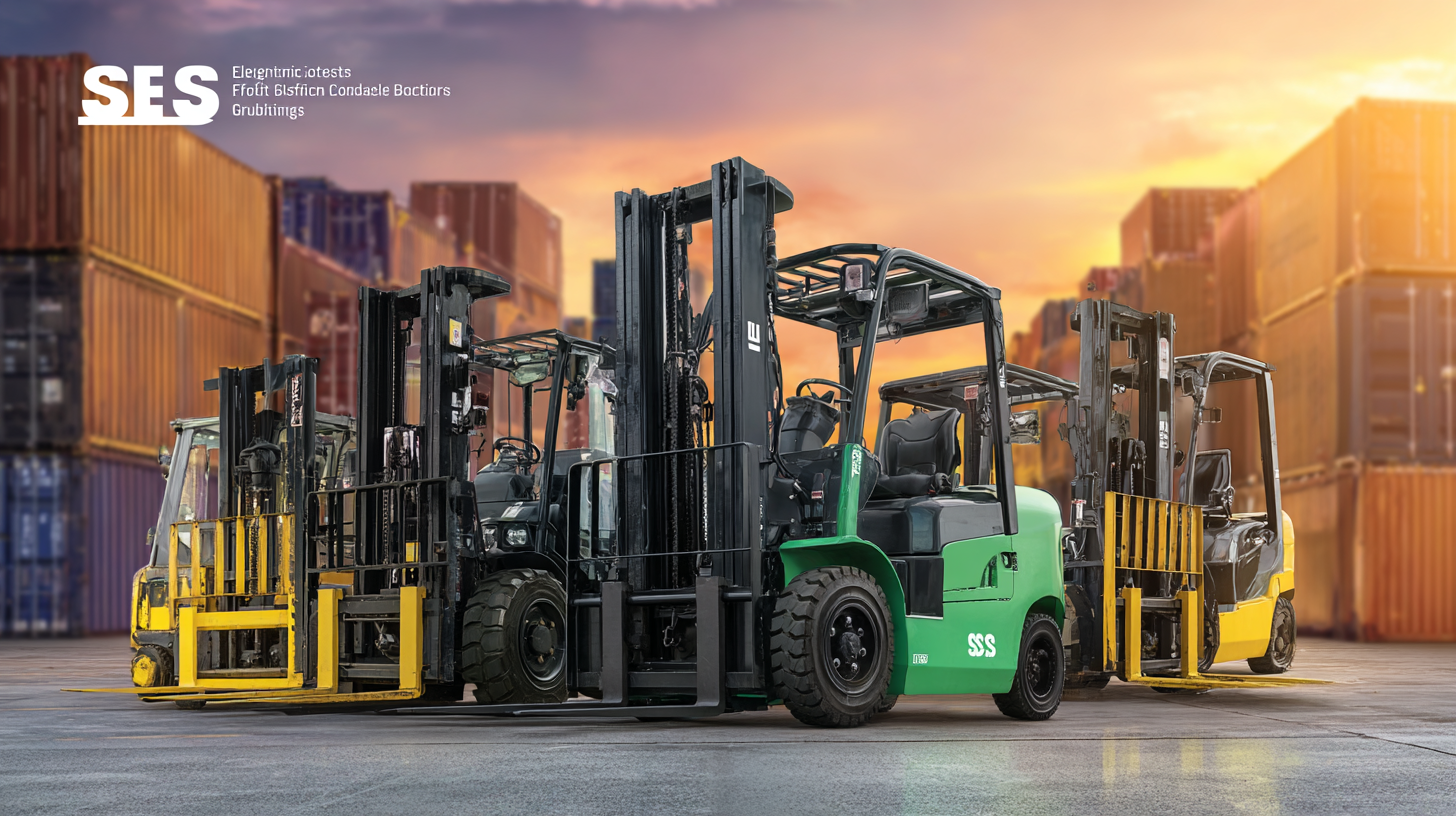Understanding Challenges with Best Electric Forklifts for Global Buyers
As the global market for material handling continues to evolve, the demand for efficient and sustainable solutions, particularly Electric Forklifts, has surged significantly. According to a report by Research and Markets, the electric forklift market is projected to reach USD 14.61 billion by 2026, growing at a CAGR of 4.23% during the forecast period. This growth is driven by increasing awareness of environmental sustainability and the operational advantages offered by electric models, such as lower energy costs and reduced emissions. However, despite their benefits, global buyers face various challenges, including selection criteria, technological advancements, and varying regional regulations that impact procurement decisions. This blog aims to highlight these challenges and provide insights into selecting the best electric forklifts tailored to meet the needs of diverse operational environments.

Challenges in Selecting Electric Forklifts: Insights for Global Buyers
Selecting the right electric forklift can present unique challenges for global buyers, especially as they navigate the complexities of
decarbonizing logistics. With many companies under pressure to reduce emissions,
the shift towards electric forklifts is becoming increasingly important.
However, a recent survey revealed that only a small percentage of companies have developed clear strategies for this transition.
Buyers must therefore be vigilant in understanding the specific emissions targets of their operations and how electric forklifts can contribute
to achieving these goals.
Additionally, the material-handling market is currently in flux, influenced
by various macroeconomic trends. As the landscape transforms, manufacturers must adapt their products and services to meet
evolving buyer needs. This creates further complexity for global buyers, who must stay informed about
the changes and ensure that their selections align with both current demands and future market directions. Engaging with manufacturers
that understand these dynamics can significantly ease the selection process, ultimately leading to more informed and
sustainable choices in electric forklift procurement.
Trends Shaping Electric Forklift Technology by 2025: Key Innovations to Watch
As the global logistics landscape evolves, electric forklift technology is experiencing significant advancements that will shape the industry by 2025. One of the most notable trends is the increasing emphasis on lithium-ion battery systems. These batteries offer faster charging times, longer lifespans, and reduced maintenance compared to traditional lead-acid batteries. As more companies seek to improve efficiency and reduce downtime, the shift towards lithium-ion technology is becoming a game-changer for electric forklifts.
Another key innovation transforming electric forklift technology is the integration of automation and IoT solutions. Connected forklifts are now equipped with sensors and real-time data analytics, enabling fleet managers to monitor equipment performance, predict maintenance needs, and optimize operations. This smart technology not only enhances productivity but also improves safety measures by reducing human error in warehouse environments. As these innovations become more prevalent, global buyers will need to adapt to the changing marketplace and leverage these advancements to maintain their competitive edge.

Understanding Battery Technology Advancements for Enhanced Electric Forklift Performance
The evolution of battery technology has dramatically transformed the landscape of electric forklifts, providing global buyers with enhanced performance and efficiency. Recent reports from the World Industrial Report indicate that lithium-ion batteries, which have surged in popularity, offer a longer lifespan and quicker charging times compared to traditional lead-acid batteries. In fact, lithium-ion batteries can reduce charging time to as little as 1-2 hours while delivering a lifespan of up to 10 years, significantly increasing operational uptime.
Moreover, advancements in battery management systems (BMS) are pivotal in optimizing the performance of electric forklifts. A study by the International Battery Association found that integrating intelligent BMS can lead to a 20-30% improvement in energy utilization, translating to lower operational costs for users. This technology not only enhances reliability and safety by preventing overheating and overcharging but also allows for real-time monitoring of battery health, ensuring that fleets can operate without unexpected downtime.
As global buyers navigate the market for electric forklifts, understanding these advancements in battery technology is crucial for making informed purchasing decisions and maximizing operational efficiency.
Evaluating Cost-Benefit Analysis: Electric Forklifts vs. Traditional Options in 2025
As the industrial landscape evolves, the cost-benefit analysis of electric forklifts compared to traditional gas-powered options becomes increasingly relevant, particularly as we approach 2025. The electric forklift market is projected to grow significantly, driven by advancements in battery technology and an increasing shift towards sustainability. In 2023, the global forklift battery market, encompassing lead-acid and lithium-ion batteries, was valued at approximately $6 billion, with expectations to reach over $10 billion by 2025. This growth underscores the importance of selecting the right technology to maximize operational efficiency.
Electric forklifts offer numerous advantages, such as decreased emissions and lower operating costs, especially when combined with lithium-ion battery systems. These systems provide faster charging times and longer lifespans compared to lead-acid counterparts, making them ideal for applications in warehouses and distribution centers. With electric models generally producing lower noise levels and requiring less maintenance, companies can experience both direct and indirect cost savings. In the long run, the shift towards electric forklifts not only supports corporate sustainability goals but also enhances productivity in an increasingly competitive market.
Navigating Global Regulations Impacting Electric Forklift Adoption and Usage
 The growing trend towards electric forklifts is accompanied by various global regulations that can complicate their adoption and usage. Different regions have established specific standards aimed at ensuring safety, efficiency, and environmental sustainability. For instance, the European Union enforces strict emissions targets, which significantly impacts the types of electric forklifts eligible for sale in its markets. These regulations not only dictate the technical specifications of the forklifts but also influence the supply chain, as manufacturers must align their products with local requirements for successful market entry.
The growing trend towards electric forklifts is accompanied by various global regulations that can complicate their adoption and usage. Different regions have established specific standards aimed at ensuring safety, efficiency, and environmental sustainability. For instance, the European Union enforces strict emissions targets, which significantly impacts the types of electric forklifts eligible for sale in its markets. These regulations not only dictate the technical specifications of the forklifts but also influence the supply chain, as manufacturers must align their products with local requirements for successful market entry.
Moreover, navigating these regulations requires a deep understanding of not only the legal frameworks but also the variations in enforcement and compliance across countries. Global buyers must consider factors such as certification requirements, maintenance standards, and training for operators. In some regions, electric forklift users may be eligible for incentives or rebates, which can further complicate decision-making. As a result, navigating these regulatory landscapes is crucial for buyers looking to invest in electric forklifts, as it affects both the initial purchase and the long-term operation of their fleets.











